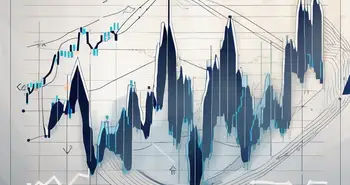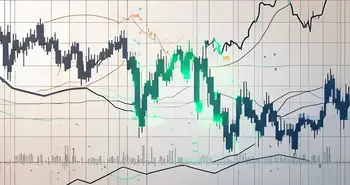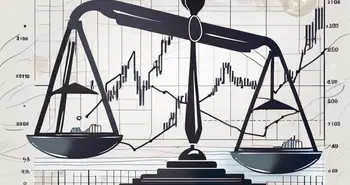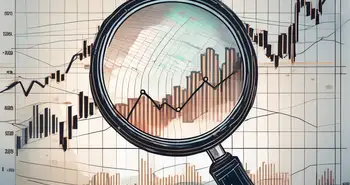Understanding Pips in Forex Trading

Forex trading is a fascinating and dynamic world, where currencies from different nations are bought and sold. As a financial market with an average daily trading volume of over $5 trillion, it offers incredible opportunities for traders to profit. However, to thrive in this environment, it is crucial to understand the concept of pips, which are an integral part of forex trading.
What is Forex Trading?
Forex, short for foreign exchange, is the global market for buying and selling currencies. It operates 24 hours a day, five days a week, allowing traders to participate in currency trading from anywhere in the world. Whether you're a large financial institution, a multinational corporation, or an individual investor, forex trading offers a level playing field for everyone.
The Basics of Forex Trading
At its core, forex trading involves buying one currency while selling another simultaneously. Currencies are always traded in pairs, such as the EUR/USD (Euro/US Dollar) or GBP/JPY (British Pound/Japanese Yen). The goal is to profit from the fluctuations in exchange rates between the two currencies.
For example, if you believe the Euro will appreciate against the US Dollar, you would buy the EUR/USD currency pair. If your prediction is correct and the exchange rate rises, you can sell the Euro and convert it back to US Dollars at a higher rate, pocketing the difference as profit.
Key Terms in Forex Trading
Before delving deeper into pips, let's familiarize ourselves with some key terms in forex trading:
- Base Currency: The first currency in a currency pair is called the base currency. It represents the unit of measurement when buying or selling currencies.
- Quote Currency: The second currency in a currency pair is called the quote currency. It indicates the value of the base currency in relation to the quote currency.
- Exchange Rate: The price at which one currency can be exchanged for another.
The Concept of Pips in Forex
Now that we have a basic understanding of forex trading, let's explore the concept of pips. A pip, short for “percentage in point,” is a unit of measurement used to express the change in value between two currencies in a currency pair. It is one of the fundamental building blocks upon which forex trading is based.
Defining a Pip
A pip is typically the fourth decimal place in currency pairs, except for currency pairs involving the Japanese Yen, where it is the second decimal place. For example, if the EUR/USD exchange rate moves from 1.2345 to 1.2346, it has moved by one pip.
Pips are crucial because they help us determine the profit or loss in a trade. As we trade larger positions, even a small change in pip value can have a significant impact on our trading account.
The Importance of Pips in Forex Trading
Understanding pips is crucial for proper risk management and position sizing in forex trading. As forex traders, we aim to profit from the fluctuations in exchange rates, and knowing the value of each pip allows us to calculate potential profits or losses accurately.
For example, if the value of one pip in the EUR/USD currency pair is $10, and we make a trade with a 50-pip profit, we stand to make $500. Conversely, a trade with a 50-pip loss would result in a $500 loss.
How Pips Influence Forex Trading
Pips not only help us assess potential profits and losses, but they also play a crucial role in determining the value of trades and calculating risk/reward ratios. Let's explore these concepts further.
Calculating the Value of a Pip
The value of a pip depends on the size of the trade (lot size) and the currency pair being traded. Different brokers offer different lot sizes, but a standard lot size in forex trading represents 100,000 units of the base currency. Mini and micro lots, representing 10,000 and 1,000 units respectively, are also commonly used.
To determine the value of a pip, you need to multiply the pip value by the lot size. For example, if the pip value is $0.10 for a micro lot of the EUR/USD currency pair, a 10-pip move would result in a profit or loss of $1. As the lot size increases, so does the value of a pip.
How Pips Affect Profit and Loss
Pips have a direct impact on our profit and loss in forex trading. When we enter a trade, whether it's a buy or sell order, our potential gain or loss is determined by the number of pips the exchange rate moves in our favor or against us.
It's important to note that while pips are a reliable measure of profit and loss, they do not take into account other factors such as transaction costs, spreads, and slippage. However, they provide a starting point for assessing potential returns and risks.
The Role of Pips in Trading Strategies
As forex traders, we develop and implement various trading strategies to capitalize on market opportunities. Pips play a crucial role in these strategies by helping us manage risk and make informed decisions.
Using Pips in Risk Management
Risk management is a cornerstone of successful forex trading. Setting appropriate stop-loss and take-profit levels based on pip values helps us control potential losses and protect our trading capital.
By defining our risk-reward ratio, we can ensure that the potential reward in a trade outweighs the risk. For example, if we are willing to risk 50 pips for a potential profit of 100 pips, we have a risk-reward ratio of 1:2. This means that for every trade that hits our take-profit level, we can afford two trades that hit our stop-loss level and still come out profitable.
Pips and Trading Positions
Pips also influence our decision to enter or exit trading positions. When developing a trading strategy, we often set profit targets based on specific pip movements. For example, if we believe a currency pair is likely to move 100 pips in our favor, we might set our profit target at that level and exit the trade.
In addition, certain trading strategies rely on specific pip movements or patterns, such as breakout strategies that aim to capitalize on significant price movements after a period of consolidation.
Understanding Pip Spreads
A pip spread, often referred to as a bid-ask spread, is the difference between the bid price (the price at which buyers are willing to purchase a currency pair) and the ask price (the price at which sellers are willing to sell a currency pair).
What is a Pip Spread?
A pip spread is measured in pips and represents the cost of entering a trade. Brokers make money by offering currency pairs at slightly different bid and ask prices, effectively earning the spread.
For example, if the EUR/USD currency pair has a bid price of 1.2000 and an ask price of 1.2005, the spread is 0.0005 or 5 pips. This means that before we can profit from a trade, the exchange rate needs to move in our favor by at least the spread amount.
How Pip Spreads Impact Trading
Pip spreads can significantly impact our trading strategy and overall profitability. A wider spread reduces the profit potential of a trade, as we need to overcome a larger spread before making a profit.
In addition, high spreads can make it challenging to enter and exit trades at the desired price, as the spread effectively creates a “gap” between buying and selling prices. This can lead to slippage, where we get filled at a different price than expected, potentially affecting our profit and loss.
As an expert in forex trading, I've witnessed the importance of understanding pips firsthand. They are the building blocks upon which successful trading strategies are based. By mastering the concept of pips, traders can accurately assess potential profits, manage risk effectively, and make informed trading decisions.
My advice to aspiring forex traders is to dedicate time and effort to comprehending the world of pips fully. Practice analyzing currency pairs, calculating pip values, and understanding the impact of pips on your trading strategy. This knowledge will provide a solid foundation for success in the forex market.
FAQ – Frequently Asked Questions
What is forex trading?
Forex trading involves buying and selling currencies in the global market to profit from fluctuations in exchange rates.
What are pips?
Pips are a unit of measurement used to express the change in value between two currencies in a currency pair. They are essential for calculating profits and losses in forex trading.
How do I calculate the value of a pip?
To calculate the value of a pip, multiply the pip value by the lot size. The lot size represents the number of units traded, which can vary depending on your chosen trading position.
How do pip spreads impact trading?
Pip spreads, also known as bid-ask spreads, affect the cost of entering a trade. A wider spread reduces the profit potential and can make it challenging to enter and exit trades at desired prices.
What is risk management in forex trading?
Risk management involves setting appropriate stop-loss and take-profit levels and defining risk-reward ratios to control potential losses and protect trading capital.
By mastering the concept of pips and understanding their role in forex trading, you will be better equipped to navigate the dynamic world of currency trading. Remember, successful trading requires continuous learning, practice, and a disciplined approach. Good luck on your forex trading journey!
Ready to take your forex trading to the next level with the knowledge of pips you've just acquired? Discover Morpher, the revolutionary trading platform that's changing the game with blockchain technology. Experience zero fees, infinite liquidity, and the freedom to engage in fractional investing and short selling across a multitude of markets. Ensure your safety with the Morpher Wallet, and if you're looking to boost your trades, leverage up to 10x. Join Morpher today for a unique trading experience that transcends traditional boundaries. Sign Up and Get Your Free Sign Up Bonus to start your journey with an innovative and user-centric trading platform that's tailored for the modern investor.

Disclaimer: All investments involve risk, and the past performance of a security, industry, sector, market, financial product, trading strategy, or individual’s trading does not guarantee future results or returns. Investors are fully responsible for any investment decisions they make. Such decisions should be based solely on an evaluation of their financial circumstances, investment objectives, risk tolerance, and liquidity needs. This post does not constitute investment advice.

Painless trading for everyone
Hundreds of markets all in one place - Apple, Bitcoin, Gold, Watches, NFTs, Sneakers and so much more.

Painless trading for everyone
Hundreds of markets all in one place - Apple, Bitcoin, Gold, Watches, NFTs, Sneakers and so much more.









